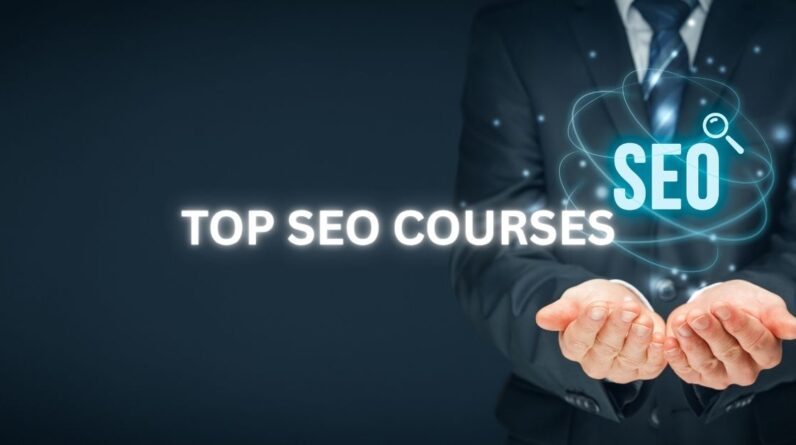
So you’ve built a website, implemented a killer SEO strategy, and now you’re wondering how to maximize your return on investment (ROI). Look no further. In this article, we’ll dive into the world of SEO strategies and explore how you can optimize them to achieve maximum ROI for your business. Whether you’re a seasoned entrepreneur or just starting out, these ROI-driven SEO tactics will help you attract more organic traffic, generate leads, and ultimately boost your bottom line. Get ready to take your search engine optimization to the next level and watch your ROI soar.
Understanding SEO
Introduction to SEO
When it comes to improving your online presence and driving organic traffic to your website, Search Engine Optimization (SEO) plays a crucial role. SEO refers to the process of optimizing your website and its content to rank higher on search engine results pages (SERPs) for relevant keywords. By implementing effective SEO strategies, you can increase your website’s visibility, attract more visitors, and ultimately improve your online business’s success.
The Importance of SEO for Businesses
In today’s digital landscape, having a strong online presence is essential for businesses of all sizes. With the majority of consumers turning to search engines like Google to find products and services, it is crucial for businesses to appear prominently in the search results. This is where SEO comes into play. By investing in SEO efforts, you can improve your website’s visibility and reach your target audience effectively. Higher visibility translates to increased organic traffic, which can ultimately lead to more conversions and higher revenue.
SEO and ROI
Return on Investment (ROI) is a critical factor for any business owner when investing in marketing strategies. SEO, when done right, can yield excellent ROI. By optimizing your website for search engines, you can attract highly targeted organic traffic and increase the chances of converting those visitors into customers. Unlike traditional marketing methods, SEO allows you to reach potential customers who are actively searching for the products or services you offer. This targeted approach can result in a higher ROI compared to other marketing channels.
Setting SEO Goals
Defining Your Objectives
Setting clear and specific goals is crucial for any successful SEO campaign. Start by identifying what you want to achieve with your SEO efforts. Is it to increase website traffic, generate leads, or improve online sales? Once you have a clear understanding of your objectives, you can tailor your SEO strategy accordingly. Having specific goals will make it easier to measure the success of your SEO efforts and make necessary adjustments along the way.
Identifying Key Performance Indicators (KPIs)
To track the progress of your SEO campaign effectively, it’s important to identify Key Performance Indicators (KPIs) that align with your goals. KPIs can include metrics such as organic traffic, keyword rankings, conversion rates, and bounce rates. By regularly monitoring these KPIs, you can gain insights into the effectiveness of your SEO strategy and make data-driven decisions to optimize your website further.
Aligning SEO Goals with Business Goals
To maximize the benefits of SEO, it’s essential to align your SEO goals with your overall business goals. Your SEO efforts should be in sync with your business’s vision, mission, and target audience. By aligning these goals, you can ensure that your SEO strategy supports your business growth, overall marketing objectives, and customer acquisition and retention efforts.
Conducting Keyword Research
Importance of Keyword Research
Keyword research forms the foundation of any successful SEO strategy. It involves identifying the keywords and phrases that your target audience is using to search for products, services, or information related to your business. By understanding the keywords that are relevant to your industry, you can optimize your website’s content to increase your chances of ranking higher on search engine results pages.
Identifying Relevant Keywords
To identify relevant keywords, put yourself in your target audience’s shoes and think about what they would search for when looking for businesses like yours. You can also use keyword research tools to gather data on search volume, competition, and related keywords. It’s important to choose keywords that are not too broad or too competitive, as it can be difficult to rank for them. Instead, focus on long-tail keywords that are more specific and have less competition.
Analyzing Keyword Competition
Understanding the competition for specific keywords is crucial in developing an effective SEO strategy. By analyzing the keyword competition, you can identify keywords that have a good balance between search volume and competition. Tools like Google’s Keyword Planner can provide insights into the level of competition for specific keywords, allowing you to choose keywords that have a higher chance of ranking.
Long-tail Keywords and Their Role in SEO
Long-tail keywords are longer, more specific keyword phrases that typically have lower search volumes but also lower competition. While they may not attract as much traffic as broad keywords, they often have higher conversion rates because they target users who are further along in the buying process. Utilizing long-tail keywords in your content can help drive more targeted traffic to your website and increase the likelihood of conversion.
On-Page Optimization
Creating High-Quality Content
Creating high-quality, informative, and engaging content is at the core of effective on-page optimization. Search engines value websites that provide valuable and relevant information to users. By producing content that is comprehensive, well-researched, and serves the needs of your target audience, you can increase your website’s chances of ranking higher on search engine results pages.
Implementing Proper Keyword Usage
Once you have identified the relevant keywords, it’s important to use them strategically throughout your website’s content. Incorporate keywords naturally into your titles, headings, body text, and meta tags. However, be careful not to overuse them, as this can be seen as keyword stuffing and may have a negative impact on your rankings. Focus on creating content that is reader-friendly and provides value, rather than solely focusing on keyword optimization.
Optimizing Title and Meta Tags
Optimizing title tags and meta descriptions is essential for improving your website’s visibility in search engine results. Title tags are the clickable headlines that appear on search engine results pages, while meta descriptions provide a brief summary of the page’s content. Both of these elements should be optimized with relevant keywords and should accurately reflect the content of the page. By optimizing title and meta tags, you can increase the chances of attracting clicks from search engine users.
Utilizing Header Tags (H1, H2, etc.)
Header tags, such as H1, H2, H3, etc., play a crucial role in organizing and structuring your website’s content. Search engines use header tags to understand the hierarchy and relevance of different sections of your content. By utilizing header tags properly, you can improve the readability and user experience of your website, as well as make it easier for search engines to crawl and index your pages.
Improving Website Load Speed
Website load speed is a critical factor in both user experience and search engine rankings. Slow-loading websites can lead to high bounce rates and lower rankings. To improve your website’s load speed, optimize images and multimedia, minimize HTTP requests, enable browser caching, and use a content delivery network (CDN). Ensuring that your website loads quickly can lead to higher user engagement and better search engine rankings.
Optimizing Images and Multimedia
Optimizing images and multimedia is an important aspect of on-page optimization. Compressing images, using descriptive filenames, and adding alt text can help search engines understand the context of your visual content. Additionally, optimizing multimedia elements, such as videos and infographics, can improve user experience and increase the likelihood of engagement and social sharing.
Technical SEO
Improving Website Structure
An effective website structure is crucial for both search engine crawlers and user navigation. A well-organized website structure ensures that search engines can easily crawl and index your pages, while also providing a user-friendly experience. Create a clear hierarchy and categorize your website’s content into relevant sections and subpages. Utilize internal linking to establish connections between related pages and improve the overall structure of your website.
Optimizing URL Structure
URL structure plays a role in both user experience and search engine rankings. Optimize your URLs by using descriptive and keyword-rich slugs that accurately reflect the content of the page. Avoid using long, confusing URLs with unnecessary parameters or numbers. A clean and concise URL structure can improve click-through rates and make it easier for search engines to understand and rank your pages.
Fixing Broken Links and Redirects
Broken links and redirects can negatively impact your website’s user experience and search engine rankings. Regularly audit your website for broken links and fix them promptly. Implement 301 redirects for any broken links or outdated URLs to direct users and search engines to the correct pages. By ensuring that your website has a clean link profile, you can improve user satisfaction and maintain high search engine rankings.
Implementing XML Sitemaps
XML sitemaps provide search engines with a roadmap of your website, helping them navigate and index your pages more efficiently. Generating and submitting an XML sitemap to search engines allows them to discover and crawl your pages effectively. Additionally, XML sitemaps can provide valuable insights into how often your pages are being crawled, allowing you to identify areas for further optimization.
Enhancing Website Crawlability
Improving the crawlability of your website is crucial for search engine optimization. Make sure that search engines can easily access and crawl your website’s pages by avoiding blocking techniques such as the robots.txt file or meta tags. Create a logical site structure with clear internal linking, and ensure that your important pages are not buried too deep within your website’s hierarchy.
Managing Duplicate Content
Duplicate content can harm your website’s search engine rankings and user experience. Avoid duplicating content within your website and across different domains. Use canonical tags to indicate the preferred version of a page when there are multiple versions available. Regularly monitor your website for duplicate content and take necessary actions to resolve and prevent it.
Off-Page Optimization
Building High-Quality Backlinks
Building high-quality backlinks is an essential off-page optimization strategy. Backlinks, which are links from other websites to yours, are seen as a vote of confidence and credibility by search engines. Focus on acquiring backlinks from reputable and authoritative websites within your industry. This can be achieved through content marketing, influencer outreach, and building relationships with other website owners. A natural and diverse link profile can help improve your search engine rankings and drive more organic traffic to your website.
Engaging in Guest Blogging
Guest blogging is an effective way to build relationships, increase exposure, and attract high-quality backlinks. Identify reputable websites within your industry that accept guest posts and offer to contribute valuable content. When guest blogging, ensure that your content is unique, well-written, and provides value to the readers. By guest blogging on authoritative websites, you can expand your reach, establish your expertise, and attract relevant traffic to your website.
Utilizing Social Media for SEO
Social media platforms can have a significant impact on your SEO efforts. While social media signals may not have a direct impact on search engine rankings, they can indirectly influence your website’s visibility and organic traffic. By actively engaging with your audience on social media, sharing valuable content, and encouraging social sharing, you can increase the chances of your content being discovered and shared, leading to more backlinks and improved search engine rankings.
Monitoring and Managing Online Reputation
Online reputation management is crucial for maintaining a positive brand image and maximizing your online visibility. Monitor online reviews, comments, and mentions of your brand across various platforms. Respond promptly and professionally to any negative feedback or complaints. By effectively managing your online reputation, you can build trust with your audience and improve your website’s credibility and search engine rankings.
Influencer Marketing for SEO
Influencer marketing involves partnering with influential individuals within your industry to promote your brand, products, or services. By leveraging the reach and influence of industry thought leaders and experts, you can expand your brand’s visibility, attract more organic traffic, and gain high-quality backlinks. Collaborating with influencers can enhance your SEO efforts by increasing brand awareness, driving engagement, and improving search engine rankings.
Local SEO Strategies
Optimizing for Local Search
For businesses targeting a specific geographic area, optimizing for local search is essential. Local SEO strategies focus on improving your website’s visibility for location-specific searches. This involves optimizing your website’s content with local keywords, creating location-specific landing pages, and optimizing your Google My Business page. By targeting local search, you can reach potential customers in your area and increase foot traffic to your physical store or office.
Creating and Optimizing Google My Business Page
Google My Business is a free tool that allows businesses to manage their online presence across various Google platforms, including Google Search and Google Maps. Creating and optimizing your Google My Business page is crucial for improving your local search visibility. Ensure that your business information is accurate, complete, and up-to-date. Encourage your customers to leave reviews and respond promptly to any customer inquiries or feedback. By optimizing your Google My Business page, you can increase the chances of appearing in the local pack and attracting more local customers.
Local Citations and Directories
Local citations and directories are online listings of businesses, typically including their name, address, and phone number (NAP). By ensuring that your business is listed accurately in relevant local directories and citation sites, you can improve your local search rankings. Focus on reputable and authoritative directories specific to your industry and location. Consistency in your NAP information across various platforms is crucial to avoid confusion and ensure that search engines correctly associate your business with its location.
Leveraging Online Reviews
Online reviews play a significant role in local SEO and can greatly influence potential customers. Encourage your satisfied customers to leave reviews on platforms like Google, Yelp, and industry-specific review sites. Respond to reviews, both positive and negative, in a timely and professional manner. Positive reviews can improve your website’s visibility and credibility, while effectively managing negative reviews can help mitigate their impact. Regularly monitor your online reviews and take steps to address any customer concerns.
Targeting Location-Specific Keywords
To further enhance your local SEO efforts, target location-specific keywords. Incorporate local keywords naturally within your website’s content, meta tags, and headings. Conduct keyword research specific to your target location and industry to identify relevant keywords with a localized focus. By optimizing your website for location-specific keywords, you can increase your visibility in local search results and attract more geographically targeted traffic.
Mobile Optimization
The Significance of Mobile-Friendly Websites
With the increasing use of mobile devices for internet browsing, having a mobile-friendly website is crucial. A mobile-friendly website is optimized to provide a seamless user experience and easy navigation on mobile devices. Mobile optimization is not only important for user satisfaction but also for search engine rankings. Search engines prioritize mobile-friendly websites and may penalize those that are not optimized for mobile devices.
Implementing Responsive Web Design
Responsive web design is an approach that allows your website to adapt and display correctly on different devices and screen sizes. By implementing a responsive web design, you can ensure that your website provides optimal user experience regardless of the device used to access it. This includes adjusting the layout, font sizes, images, and functionality to fit different screen sizes and resolutions. A responsive design can help improve your search engine rankings and reduce bounce rates on mobile devices.
Optimizing for Mobile Page Speed
Mobile page speed is an important factor in both user experience and search engine rankings. Slow-loading mobile websites can result in high bounce rates and lower rankings. Optimize your website’s load speed specifically for mobile devices by minimizing the use of large files, leveraging browser caching, and optimizing code. Regularly test your website’s mobile page speed and make necessary improvements to ensure fast-loading pages.
Utilizing Accelerated Mobile Pages (AMP)
Accelerated Mobile Pages (AMP) is an open-source framework that allows websites to create fast and lightweight versions of their pages specifically for mobile devices. By implementing AMP, you can provide users with an extremely fast and streamlined mobile browsing experience. AMP pages are prioritized in search engine rankings, appearing on top of mobile search results, and often feature an AMP badge, indicating their accelerated nature. Utilizing AMP can help improve your website’s visibility and user experience on mobile devices.
Monitoring and Analytics
Setting Up Google Analytics
Google Analytics is a powerful tool that provides valuable insights into your website’s performance and user behavior. Set up Google Analytics on your website to track important metrics such as website traffic, user engagement, conversion rates, and bounce rates. By analyzing these metrics, you can gain a deeper understanding of your website’s performance and make data-driven decisions to optimize your SEO strategy.
Tracking SEO Performance Metrics
To measure the success of your SEO efforts, it’s important to track relevant performance metrics. Monitor metrics such as organic traffic, keyword rankings, backlinks, and conversion rates. By tracking SEO performance metrics, you can assess the effectiveness of your SEO strategy, identify areas for improvement, and make informed decisions to optimize your website further.
Analyzing Website Traffic and User Behavior
Analyzing website traffic and user behavior is crucial for understanding how users interact with your website and identifying areas for improvement. Utilize tools like Google Analytics to gain insights into metrics such as page views, bounce rates, average session duration, and user flow. By analyzing these metrics, you can identify popular pages, pages with high bounce rates, and areas where users drop off the conversion funnel. Use this information to optimize your website’s content, user experience, and conversion paths.
Monitoring Keyword Rankings
Regularly monitoring keyword rankings is important to understand your website’s visibility in search engine results. Utilize SEO ranking tools to track the rankings of your target keywords. By monitoring keyword rankings, you can identify keywords that are performing well and those that need further optimization. This information can guide your content creation and optimization efforts to improve your website’s search engine rankings.
Identifying and Fixing SEO Issues
SEO issues can negatively impact your website’s visibility and performance. Regularly conduct website audits to identify any SEO issues such as broken links, duplicate content, or slow page speed. Address these issues promptly to ensure that your website performs optimally and maintains high search engine rankings. Utilize website auditing tools and conduct regular checks to stay on top of any potential SEO issues.
Continuous Optimization and Adaptation
Staying Updated with Search Engine Algorithms
Search engine algorithms are constantly evolving, and staying updated with these changes is crucial for maintaining high search engine rankings. Search engines like Google regularly update their algorithms to provide users with the most relevant and high-quality search results. Stay current with industry news, follow reputable SEO blogs, and attend relevant conferences to stay informed about search engine algorithm updates and best practices.
Regularly Evaluating and Adjusting SEO Strategy
SEO is an ongoing process that requires regular evaluation and adjustment. Monitor your SEO performance metrics, such as organic traffic, keyword rankings, and conversion rates, and evaluate the effectiveness of your current SEO strategy. Identify areas that require improvement and make adjustments accordingly. Continuously evaluate and optimize your website’s content, technical elements, and off-page optimization efforts to stay ahead of the competition and maximize your SEO results.
Keeping Up with Industry Trends and Best Practices
The field of SEO is constantly evolving, and it’s important to keep up with industry trends and best practices. Subscribe to reputable SEO publications, participate in industry forums, and engage with other SEO professionals to stay informed about the latest trends, algorithm updates, and tactics. By staying up to date with industry trends and best practices, you can adapt your SEO strategy accordingly and continue to drive maximum ROI.
Conducting A/B Testing and Optimization
A/B testing involves experimenting with different versions of your website or content to determine which one performs better. By conducting A/B tests on elements such as headlines, calls-to-action, page layouts, or landing pages, you can gather data on user behavior and make data-driven decisions to optimize your website. A/B testing allows you to fine-tune your SEO strategy and continuously improve your website’s performance and conversion rates.
Optimizing for Voice Search
With the rise of virtual assistants and voice-activated devices, optimizing for voice search is becoming increasingly important. Voice search queries often differ from traditional text-based searches, so it’s essential to optimize your website’s content for voice search. Use natural language and conversational keywords in your content, answer frequently asked questions, and provide concise and direct answers. By optimizing for voice search, you can increase your chances of appearing in voice search results and reach a broader audience.







